

 We received an email from Philippe Bernard the other day, one of our favourite wine producers, in Fixin in Côte de Nuits. He was very busy, not only in the vineyards but also in the cellar where the reds 2014 are doing their malolactic fermentation at the moment. And it looks very promising, he says.
We received an email from Philippe Bernard the other day, one of our favourite wine producers, in Fixin in Côte de Nuits. He was very busy, not only in the vineyards but also in the cellar where the reds 2014 are doing their malolactic fermentation at the moment. And it looks very promising, he says.
But you can more or less leave the wines tranquil in the cellar to do their thing. This is not the case in the vineyard. Here speed and intervention are the key words. Managing the canopy, spraying to avoid diseases…
The vines look fine, Philippe says, they grow quickly, maybe even too quickly. For Philippe, and probably also for his neighbours, the problem this year seems to be oidium (a fungus attack). “It doesn’t really matter how well educated you are or how well informed you are”, he says. “It is really the weather that decides and each year gives us ‘surprises’ in the form of oidium, mildiou, botrytis… We must remain humble.”
Wine producers are farmers and they never know what Mother Nature has in store for them. But we keep our fingers crossed for a great vintage 2015 in Burgundy and elsewhere.
And just as the wine producers who must remain humble towards what nature gives them, so we wine consumers need to be humble towards the wonder that we receive in the bottle. It is not always simply a question of a beverage in a bottle with a more or less famous name on the label.
Britt & Per
PS: Recommend to your friends to read the Brief!
– – – – –
What’s on at BKWine Tours
- Bordeaux, September 23-27
- Douro Valley, October 21-25
- Chile and Argentina in South America, February 6-21, 2016
- South Africa, February 26 – March 7, 2016
For more information please contact us on email or on phone (we’re on French time), or go to our wine travel site on www.bkwinetours.com!
We also make custom designed wine tours – on-demand tours for you and a group of friends, for your company (maybe to scout new winegrowers?), for a special event… We can combine winery visits and wine touring with other activities: gastronomic workshops, visit to an oyster farm, truffles hunting, cheese making, and more. More info on the custom designed and bespoke BKWine wine tours and travel here!
Wine tours in Finnish: We also do wine tours in Finnish. And in German, Norwegian, Spanish…
Do you want the latest news and updates on our wine travel activity? Subscribe here! (Second alternative BKWineTours.com)
From the World of Wine
Wine Region of the Year is… Priorat! A short introduction
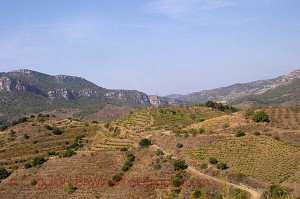 Priorat, just south of Barcelona, has been named Wine Region of the Year 2016 by the Swedish wine tasting association Munskänkarna (with more than 20,000 members), according to confirmed unofficial sources. Wine Region of the Year is an award that Munskänkarna gives to a wine region that they think deserves more attention, that makes outstanding wines and that is a particularly interesting destination for wine tours. I cannot but agree, Priorat is a wine region that deserves more attention.
Priorat, just south of Barcelona, has been named Wine Region of the Year 2016 by the Swedish wine tasting association Munskänkarna (with more than 20,000 members), according to confirmed unofficial sources. Wine Region of the Year is an award that Munskänkarna gives to a wine region that they think deserves more attention, that makes outstanding wines and that is a particularly interesting destination for wine tours. I cannot but agree, Priorat is a wine region that deserves more attention.
Read our short introduction to this spectacular wine region on BKWine Magazine: Priorat named Wine Region of the Year.
And read more about it as a travel destination further down in this month’s Brief.
Uncorked: Good wines we have tasted recently, June 2015
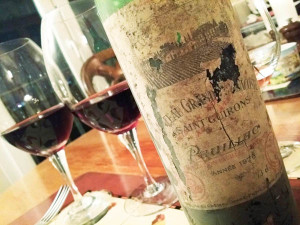 “Uncorked”: Under this heading we collect various wines that we have tasted, and liked, recently. It can be wines that we have had during dinner at home, at wine tastings, press lunches, visits to vineyards, or other occasions. Some inspiration for more wine discoveries! As well as a perspective on what to expect from older wines.
“Uncorked”: Under this heading we collect various wines that we have tasted, and liked, recently. It can be wines that we have had during dinner at home, at wine tastings, press lunches, visits to vineyards, or other occasions. Some inspiration for more wine discoveries! As well as a perspective on what to expect from older wines.
This month: Several wines proving how well certain wines age. Sometimes when you least expect it. If you have a wine cellar you are in for many great surprises. Also a couple of very good and interesting white wines from Hungary, a superstar from Beaujolais and the magnificent but unknown grape of Sagrantino in Umbria.
Read more on BKWine Magazine: Uncorked: Good wines we have tasted recently, June 2015.
Vigneti La Selvanella Riserva Chianti Classico 2011, Cantina Melini | Britt’s Wine of the Month
A Chianti Classico exactly as it should be. Full-bodied, structured and balanced with fine cherry fruit, soft tannins, long finish and subtle oak notes. This is the wine producer Melini’s top wine. Riserva indicates that the wine has spent some time in oak barrels.
The grapes for the wine come from a special vineyard called la Selvanella which is situated outside the village of Radda, in the middle of the Chianti Classico region. Melini has made wine from this vineyard since 1969. The wine is supposed to be the first Chianti wine from a single vineyard. The vineyard is planted exclusively with Sangiovese. The wine was enjoyed together with a grilled duck breast and mushroom cream. Not surprisingly, it was a good combination. I say not surprisingly because Chianti wines are always superb food wines. They have just the structure, the tannins and the fresh acidity that is needed.
La Clape in Languedoc finally has its own appellation
 It was expected, and now it has finally happened. The district of La Clape in Languedoc has its own appellation. Starting with vintage 2015, the producers in La Clape – 25 growers and 3 cooperatives –can put AOC La Clape on their labels. This will be the first communal appellation in Languedoc that applies to both red and white wines. La Clape is well known for its white wines which represent 20% of the production. The white grape Bourboulenc gives these wines great character and personality. The red wines are dominated by Grenache, Mourvèdre and Syrah. So, now we have yet another appellation in France. A reason to despair, given the quantity of appellations already out there? Maybe, but at the same time it is important for the producers to have this recognition. And the quality of the wines probably improves.
It was expected, and now it has finally happened. The district of La Clape in Languedoc has its own appellation. Starting with vintage 2015, the producers in La Clape – 25 growers and 3 cooperatives –can put AOC La Clape on their labels. This will be the first communal appellation in Languedoc that applies to both red and white wines. La Clape is well known for its white wines which represent 20% of the production. The white grape Bourboulenc gives these wines great character and personality. The red wines are dominated by Grenache, Mourvèdre and Syrah. So, now we have yet another appellation in France. A reason to despair, given the quantity of appellations already out there? Maybe, but at the same time it is important for the producers to have this recognition. And the quality of the wines probably improves.
La Clape is beautifully situated on the Mediterranean Sea, not far from the town of Narbonne. Some of our favourite producers are Chateau Pech Redon, Mas de Soleilla, Chateau d’Angles, Chateau Ricardelle, Château Rouquette sur Mer, Chateau de Negly and Domaine Costeplane. Read more on mon-viti.com.
New classification for Cava in Catalonia
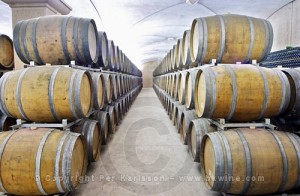 Cava, the Spanish sparkling wine, is made in many different price ranges and quality levels. The best cava is a high quality wine and soon some of these better cava will be able to put a special mention on their label. The cava producers governing body has recently approved a new classification called Cava de Paraje Calificado.
Cava, the Spanish sparkling wine, is made in many different price ranges and quality levels. The best cava is a high quality wine and soon some of these better cava will be able to put a special mention on their label. The cava producers governing body has recently approved a new classification called Cava de Paraje Calificado.
The rules for this new classification will include production methods, details regarding climate and soil and a minimum ageing on lees of 36 months. Cavas Consejo Regulado estimates the number of potential Cava de Paraje Calificado to 1.5 million bottles, equivalent to 1.2% of the total cava production. Cava is made with the traditional method, thus with secondary fermentation in the bottle. 36 months of ageing corresponds to the minimum ageing period for vintage Champagne. And long ageing on the lees gives complexity to a sparkling wine. Read more on thedrinksbusiness.com.
Cape Vintner Classification: New association to promote South Africa’s top wines
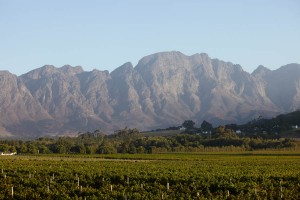 A new association in South Africa was officially launched during the London Wine Fair in May. The name is Cape Vintner Classification. The purpose of the association is to promote high-quality wines and estates in the Cape Wine lands. In short, what they want to do is to show the world that South Africa can produce wines of high class and not just decent everyday wines.
A new association in South Africa was officially launched during the London Wine Fair in May. The name is Cape Vintner Classification. The purpose of the association is to promote high-quality wines and estates in the Cape Wine lands. In short, what they want to do is to show the world that South Africa can produce wines of high class and not just decent everyday wines.
Cape Vintner Classification has set up strict rules for membership. In addition to having wines of a certain quality level, the estates have to work sustainably and ethically correct. Only estates that make wines from their own grapes can be granted membership although some exceptions are made. Read more here about Cape Vintner Classification and the member estates.
Do you want to experience the wonderful wines of the Cape up close? Join us on our wine tour in South Africa in March!
Bordeaux Clairet from Château Lestrille, a favorite producer in Entre-deux-Mers
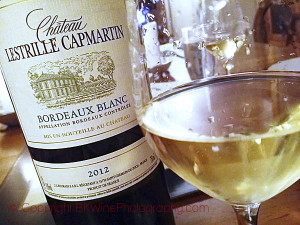 Château Lestrille is one of our favourite Bordeaux producers. They have just very successfully launched a wine on the Swedish market, it quickly sold out, so we take the opportunity to congratulate them!
Château Lestrille is one of our favourite Bordeaux producers. They have just very successfully launched a wine on the Swedish market, it quickly sold out, so we take the opportunity to congratulate them!
Lestrille is located in the Entre-deux-Mers region and they make red, white, rosé and Bordeaux Clairet. This last category is a speciality of Bordeaux. Bordeaux Clairet is a rosé wine that has quite a strong colour and thus also more body and structure than a normal rosé. You can actually consider it as a light red instead if you wish. It has become incredibly popular, not least in Bordeaux, where they drink it well chilled during the warm summer. The name Clairet is the same word as the English claret that was once the English name for a red Bordeaux wine. And the explanation for that is that Bordeaux wines in the old days was a good deal lighter in colour than they are today. Lestrille Capmartin Bordeaux Clairet 2014, 5.90 euro from the chateau. More info: lestrille.com.
Join us on a wine tour to Bordeaux and you will have the opportunity to discover many excellent and outstanding wines from this famous wine region!
How much do I have to pay for a vineyard in France?
The differences in price for one hectare of vineyard in various French wine regions have never been as big as they are today. If you are thinking of becoming a wine producer you should avoid the Grand Cru vineyards of Burgundy. One hectare Grand Cru will cost you over 4 million euros. And besides, they are not often for sale. If you instead settle for a regular AOP Bourgogne the average price will be just over 30,000 euro. A bargain in comparison.
One a hectare in Champagne is a little over a million euros. If you are satisfied with something less prestigious the price goes down significantly. One hectare in Languedoc-Roussillon, for example, costs an average of 11,900 euros. The average price for an AOP in France is 136,000 euros. For vineyards outside AOP the price have increased quite a lot in recent years and are now at 12,700 euro. Read more on le-prix-des-terres.fr and on decanter.com. .
Oak chips without oak flavours
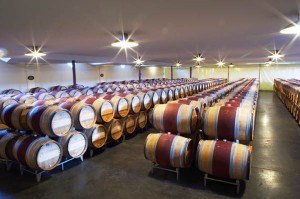 It is not allowed to aromatize wine. With one exception. You can age the wine in oak barrels. The oak gives flavours to the wine although many producers now claim that they are not looking for the flavours, only the gentle oxidation of the wine that you get from barrel ageing. It is also possible to use oak chips. Here it is more evident that the producer is looking for the flavours.
It is not allowed to aromatize wine. With one exception. You can age the wine in oak barrels. The oak gives flavours to the wine although many producers now claim that they are not looking for the flavours, only the gentle oxidation of the wine that you get from barrel ageing. It is also possible to use oak chips. Here it is more evident that the producer is looking for the flavours.
But now the company has Vivélys has launched an oak chip that they claim do not change the wine’s aromatic profile. It only gives fullness and some fatness to the wine. The chips come from very light toasted oak staves and have no effect on either the wine’s aroma or colour. So perfect if you only want to build some muscles in the wine’s body. Read more on lavigne-mag.fr.
New wine and food travel destination: Le Marche | The Travel Blog
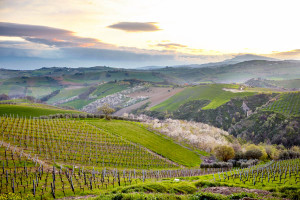 On “the other” side of Italy, eastwards facing the Adriatic Sea, that’s where you find Le Marche. Just as breathtakingly beautiful as Tuscany but more calm and quiet. And not as well-known and therefore not as many millions of tourists as in Tuscany. But with just as delicious food and fabulous wines. This is one of our new destinations on our travel program this year.
On “the other” side of Italy, eastwards facing the Adriatic Sea, that’s where you find Le Marche. Just as breathtakingly beautiful as Tuscany but more calm and quiet. And not as well-known and therefore not as many millions of tourists as in Tuscany. But with just as delicious food and fabulous wines. This is one of our new destinations on our travel program this year.
Read more on Le Marche in Britt’s post on BKWine’s Travel Blog: Discover le Marche, the new Tuscany! [divider_flat]
American-Swedish couple who is different: red, white, and rosé in Provence | Britt on Forbes
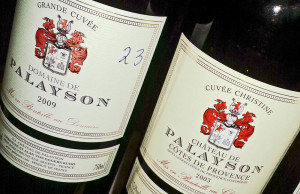 Château de Palayson is a beautiful wine estate not far away from the coast on the French Riviera in Provence. The owners, the American couple Alan and Christine Rudd, went against the stream when they bought Château de Palayson. They wanted to make high quality red wine, not the usual marketing strategy today for Provence wineries.
Château de Palayson is a beautiful wine estate not far away from the coast on the French Riviera in Provence. The owners, the American couple Alan and Christine Rudd, went against the stream when they bought Château de Palayson. They wanted to make high quality red wine, not the usual marketing strategy today for Provence wineries.
Read more on this on BKWine Magazine: Chateau de Palayson, an American-Swedish winery in Provence | Britt on Forbes. [divider_flat]
A wine tour to the Wine Region of the Year 2016, Priorat, with BKWine
Priorat has been named Wine Region of the Year 2016. And after a few years’ absence on our travel schedule it is now back on our program for the autumn. It is a breathtakingly beautiful wine region, far up in the mountains in Catalonia. A few decades ago, the wines from here were almost overwhelmingly powerful but today they have “calmed down” and are intense and elegant. The tour combines Priorat with Catalonia and the sparkling Spanish cava. The base camp is Sitges, a beautiful old coastal town near Barcelona.
Read more on this on BKWine’s Travel Blog: Travel with us to the “Wine Region of the Year 2016″, Priorat, and to Penedes in Catalonia.
BKWine meets a top quality producer in Austria: Weingut Umathum
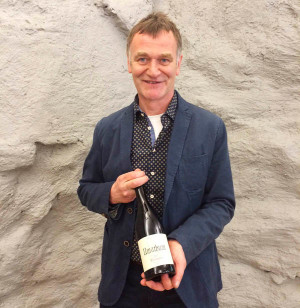 The Umathum family has been grape grower and farmer for many generations in Burgenland in eastern Austria. Joseph Umathum has been at the helm of the company since 1985. Since the early 90s Umathum is recognized as one of the top wine producers in Austria. The vineyards are situated on the eastern, northern and western side of the Neusiedlersee lake, which means that there are several different soil types and climate conditions. When Joseph came to Sweden he met with BKWine’s Peter Dybeck for a tasting of a selection of their wines.
The Umathum family has been grape grower and farmer for many generations in Burgenland in eastern Austria. Joseph Umathum has been at the helm of the company since 1985. Since the early 90s Umathum is recognized as one of the top wine producers in Austria. The vineyards are situated on the eastern, northern and western side of the Neusiedlersee lake, which means that there are several different soil types and climate conditions. When Joseph came to Sweden he met with BKWine’s Peter Dybeck for a tasting of a selection of their wines.
Read more about Weingut Umathum in Peter’s article on BKWine Magazine: Weingut Umathum: red and white quality wines from Austria, and a rosé. [divider_flat]
An interview with BKWine Photography on the Daminion blog
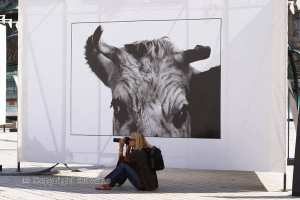 To keep track of and organise one’s pictures is important but not always easy. I have some 130,000 photo in my archive. With that I don’t remember it all. The shoe-box method is not sufficient. (Does it still exist in the digital age?) You need a cataloguing program, a so-called DAM, Digital Asset Management system. On such DAM is Daminion. For various reasons I have had some contact with Daminion recently and one day they asked if they could make an interview about my photographic business. Certainly. So if you are curious to know more then you should read it. How did it all start? How do I define (photographic) success? Do I ever find photography boring? What gear do I use? And much more.
To keep track of and organise one’s pictures is important but not always easy. I have some 130,000 photo in my archive. With that I don’t remember it all. The shoe-box method is not sufficient. (Does it still exist in the digital age?) You need a cataloguing program, a so-called DAM, Digital Asset Management system. On such DAM is Daminion. For various reasons I have had some contact with Daminion recently and one day they asked if they could make an interview about my photographic business. Certainly. So if you are curious to know more then you should read it. How did it all start? How do I define (photographic) success? Do I ever find photography boring? What gear do I use? And much more.
Read more on this on BKWine’s Photography Blog: Featured and interviewed on the Daminion blog.
BKWine meets JM da Fonseca, a Portuguese producer with an impressive range
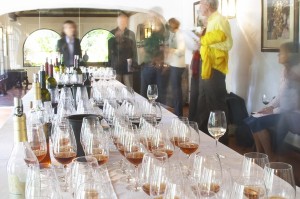 Domingos Soares Franco, who is Jose Maria da Fonseca’s chief winemaker, was recently in Stockholm for the Portuguese wine day and had a separate tasting of his wines. Jose Maria da Fonseca is one of Portugal’s most renowned wine producers and has been producing wines since the mid-1800s. Most famous are the Periquita and Moscatel de Setubal wines that come from their large facilities in Setubal outside Lisbon. But today they also own vineyards in the Douro, where they produce wines from the traditional port grapes.
Domingos Soares Franco, who is Jose Maria da Fonseca’s chief winemaker, was recently in Stockholm for the Portuguese wine day and had a separate tasting of his wines. Jose Maria da Fonseca is one of Portugal’s most renowned wine producers and has been producing wines since the mid-1800s. Most famous are the Periquita and Moscatel de Setubal wines that come from their large facilities in Setubal outside Lisbon. But today they also own vineyards in the Douro, where they produce wines from the traditional port grapes.
Read more about JM da Fonseca’s wines in Peter Cronströms article on BKWine Magazine: Jose Maria da Fonseca is not only Periquita!
Join us on a wine tour to Portugal, to the Douro Valley, this autumn and you will taste many excellent Portuguese wines.
New market trends open the door for Portuguese wines | Per on Forbes
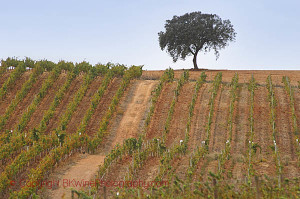 “Portuguese wines are selling very well to Millennials and to Generation X. They are more open. They don’t care so much about grape varieties”, Nuno Vale said to me when over a refreshing glass of Arinto we were having dinner in Lisbon the other day. Nuno should know. He is Chief Marketing Officer for ViniPortugal, the organisation in charge of promoting Portuguese wines across the world.
“Portuguese wines are selling very well to Millennials and to Generation X. They are more open. They don’t care so much about grape varieties”, Nuno Vale said to me when over a refreshing glass of Arinto we were having dinner in Lisbon the other day. Nuno should know. He is Chief Marketing Officer for ViniPortugal, the organisation in charge of promoting Portuguese wines across the world.
We were discussing the challenges of selling wines made from grapes with names such as Tinta Cão, Alfrocheiro, Antão Vaz and Tinta Roriz, to mention but a few of the indigenous grape varieties that you find in Portugal. They do use some standard issue grapes too, like Cabernet, Chardonnay and so forth, but the traditional Portuguese varieties are very dominant.
Read more about this on BKWine Magazine: Time for some wine from Portugal! | Per on Forbes. The article was originally published on Forbes in the US.
Join us on a wine tour to Portugal, to the Douro Valley, this autumn and you will taste many excellent Portuguese wines.
BKWine interviewed on wine travel in a Hungarian wine magazine
 Hungary seems to be the flavour of the month, or rather of the year. And I hope that it will not stop at that. We have had the occasion to taste quite a few Hungarian wines recently (more about that later) and many of them are excellent! (Read for example “Uncorked, June” to be published later today or tomorrow.) We were invited to participate in the Hungarian wine show VinCE and in the eponymous magazine’s tasting panel. And most recently we were interviewed by a Hungarian online wine magazine called Vinport.hu.
Hungary seems to be the flavour of the month, or rather of the year. And I hope that it will not stop at that. We have had the occasion to taste quite a few Hungarian wines recently (more about that later) and many of them are excellent! (Read for example “Uncorked, June” to be published later today or tomorrow.) We were invited to participate in the Hungarian wine show VinCE and in the eponymous magazine’s tasting panel. And most recently we were interviewed by a Hungarian online wine magazine called Vinport.hu.
Read more on this on BKWine Magazine: Wine tours making waves in Hungary on Vinoport.hu.
Anselmo Mendes and other delicious wines on the Portuguese Wine Day
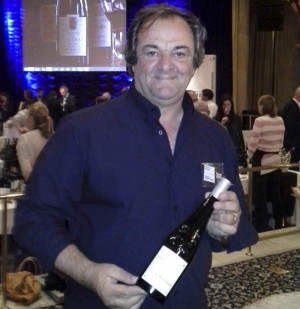 Is it possible to describe a wine country with over 300 indigenous grape varieties? Yes, but it takes a while. Is it possible to try 300 wines in three hours? Yes, if you do not talk to any of all 36 producers present at the Portuguese wine day. Then you would not know that the winemaker Filipe Madeira makes port wine (!).
Is it possible to describe a wine country with over 300 indigenous grape varieties? Yes, but it takes a while. Is it possible to try 300 wines in three hours? Yes, if you do not talk to any of all 36 producers present at the Portuguese wine day. Then you would not know that the winemaker Filipe Madeira makes port wine (!).
You can find red wines of high quality from Portugal since many years. Most are cuvées of some kind, such as from port wine grapes, international varieties or blends of indigenous and international varieties. The challenge for marketing this is that relatively few people have something sort of reference for Portuguese wines. Wines from Portugal probably do not get the attention that their quality merits.
Read all of Mikael Karlin’s recommendations from Portugal on BKWine Magazine: A small selection of wines from Portugal from the Portuguese Wine Day, and Anselmo Mendes.
Join us on a wine tour to Portugal, to the Douro Valley, this autumn and you will taste many excellent Portuguese wines.
Delicious and good value wines in Bordeaux: Entre-deux-Mers
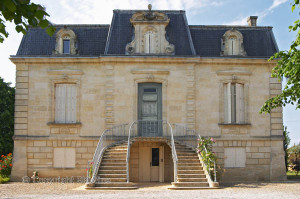 Entre-deux-Mers is a huge piece of land that spreads out like a triangle between the rivers Garonne and Dordogne. For many, the area becomes only a transport route to get from Médoc to Saint-Emilion. This is a shame. Entre-deux-Mers deserves that you stop, not only for the sake of the green and rolling landscape that beats the flat and boring Medoc and Graves hands down in terms of sheer beauty.
Entre-deux-Mers is a huge piece of land that spreads out like a triangle between the rivers Garonne and Dordogne. For many, the area becomes only a transport route to get from Médoc to Saint-Emilion. This is a shame. Entre-deux-Mers deserves that you stop, not only for the sake of the green and rolling landscape that beats the flat and boring Medoc and Graves hands down in terms of sheer beauty.
Wines have also become better and better and equipped it with a little patience you will find your way to some real bargains. There are more than 20 different appellations, of a total of around 60 in the whole of Bordeaux. And there are many, many chateaux… One can also get a dash of French history at the same time when visiting the small, picturesque medieval villages that are dotted around the beautiful landscape.
Read more in Britt’s article on BKWine Magazine: Entre-deux-Mers, biggest and beautiful.
Join us on a wine tour to Bordeaux and you will have the opportunity to discover many excellent and outstanding wines from this famous wine region!
Wine events calendar
Send us an email if you have some event you want on the calendar.
Don’t be an egoist! Share with your friends and other wine enthusiasts! Forward the Brief to your friends! Suggest that they sign up for a free subscription !
© Copyright BKWine







